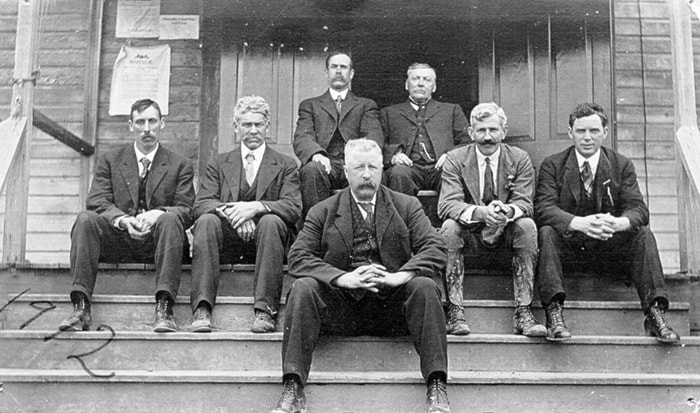Local conversations about ward systems arise every few years, so it seems to be a good idea to revisit when Maple Ridge had one for elections.
Maple Ridge had two different ward systems between incorporation and the 1940s. The earliest one divided the district into two wards. Three councilors from the west and two from the east were chosen.
By 1889, a second system was in place which had five wards covering Port Hammond/the Ridge (Ward 1), Haney (2), Yennadon/Webster’s Corners (3), Albion/East Haney (4), and Whonnock/Ruskin (5). Over the years, the numbering changed from west to east to east to west, but the areas remained roughly the same.
The ward system was for councillors as the reeve and school trustees were always elected at large.
At election time, each voter would vote for reeve, a school board candidate and one of the two or three candidates for council from his ward.
For most of the time it was in use, the ward system served the community well. Each councilor was expected to act for the whole community when required, but were also there to represent their own ward in matters involving allocations of funds and public works projects.
This was accomplished by assigning several councillors to committees, which addressed the needs of the whole district.
Individual councillors were still free to address the particular needs of their own area and could present issues brought to them by their constituents.
In the summer of 1947, the provincial government announced the results of an investigation into the role of wards, called the Goldenberg Report. Hearings had been held in every part of the province and the decision had been reached that as of June 30, 1947, the system of ward election would be dropped across the province unless communities made special application to be allowed to continue.
Wards had served Maple Ridge well in its early history, when settlers lived in discrete communities with few choosing the in-between areas or the hinterlands to the north. By the end of the Second World War, it was pressure for development on the in-fill areas that were all split between wards that led to inefficiencies in the system.
Under the ward system, fair distribution between wards was controlled by assigning budgets and keeping records according to ward expenditures.
Maple Ridge council of 1947 was keen to eliminate the extra expenditures involved in maintaining five sets of books and of haggling over every penny of difference spent.
There was great trepidation, particularly on the part of residents in the smaller communities, that the loss of the wards would mean an end to their voice on council. Within a year of the ward system being dropped, ratepayers in Whonnock, Ruskin and Webster’s Corners had formed ratepayers’ associations.
Webster’s Corners formed one even before the first non-ward election was held, in the belief that residents there might find themselves without council representation at year’s end.
The Whonnock Ratepayers and Community Association appeared before council in December 1948 with an application to put the ward question before the voters as a referendum at the next election in January.
The main issue was public works, particularly road repair and construction, and hard surfacing.
The message they received in return was that abolition of the ward system was a done deal and that council could not revisit it.
However, this did not stop the outlying districts from attempting to introduce a referendum on the topic in the 1949 and 1950 elections.
After getting no positive response on the re-establishment of wards, the ratepayers’ associations took on the responsibility of advertising for and supporting candidates from their districts.
Val Patenaude is director of the Maple Ridge Museum.
